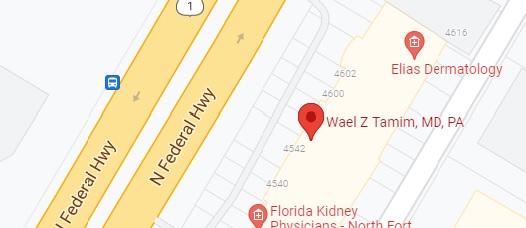
What is Coronary Artery Bypass Surgery?
Coronary artery bypass surgery or coronary artery bypass grafting (CABG) is a surgical procedure that is performed to treat the narrowed arteries that supply blood to the heart. This procedure bypasses the blocked artery and increases the blood flow to the heart.
It is performed as an emergency procedure following a heart attack or when the conservative treatments, such as blood-thinning drugs and medicines which relax the arteries, slow the heart rate, and reduce chest pain, have failed to relieve symptoms of coronary artery disease (CAD). It is one of the most common heart problems and the major cause of death in both men and women.
Coronary artery disease occurs when the cholesterol plaque builds up on the inner walls of the coronary arteries that supply blood to the heart. This condition is known as atherosclerosis. The arteries become hard and narrow, decreasing the blood flow to the heart.
Procedure of Coronary Artery Bypass Surgery
Coronary artery bypass surgery is performed either through open surgery or minimally invasive surgery.
In this procedure, a healthy blood vessel (graft) is taken from a part of your body such as leg (long saphenous vein), arm (radial artery), or chest (internal thoracic artery). Your surgeon will inject medicine or provide electric shocks to stop the heart. While your heart is stopped the blood will be redirected to a heart-lung machine that functions similarly to your heart and lungs, supplying oxygen to the blood and keeps the circulation moving.
If the artery graft is taken from leg or arm, one end of the graft is attached to the aorta and the other end is attached by stitches to the coronary artery bypassing the blockage. Now the blood bypasses the blocked and narrowed area and reaches the heart freely. If the internal thoracic artery is used, your surgeon will redirect the thoracic artery by detaching one end of it and re-attaching it below the blocked part of the coronary artery.
After the surgery is complete, your heart will be restarted, the heart-lung machine is removed and the incision will be closed with absorbable sutures.
Risks and Complications of CABG
The risks and complications of CABG procedure are higher if it is done as an emergency procedure or in the presence of certain conditions such as kidney disease, diabetes, the blocked artery in the legs, and lung disease.
The possible complications associated with CABG include:
- Bleeding
- Heart rhythm irregularities
- Heart attack
- Stroke
- Infection of the wound
- Nerve and blood vessel damage
- Blood clots
- Recurrent chest pain
Post-operative Guidelines and Prevention of CABG
After the CABG surgery, you need to follow a few post-operative instructions which include:
Physical activity such as lifting heavy things or strenuous exercises should be avoided for the first few weeks after surgery.
Medications may be prescribed to reduce chest pain and prevent blood clots.
Your doctor may recommend wearing a tight elastic bandage around the calf muscles.
You may have to contact your doctor if you observe redness, bleeding, irregular heartbeat or experience chest pain, difficulty in breathing, and weakness.
You can manage or prevent the occurrence of CAD by a few lifestyle modifications which include:
- Regular exercise
- Follow a healthy diet, low in salt and cholesterol
- Avoid smoking and alcohol intake
- Lose weight if you are obese
- Control diabetes and high blood pressure
Related Topics:
- Minimally Invasive Heart Surgery
- Atrial Fibrillation Corrective Surgery
- Percutaneous Mitral Valve Repair
- Removal of Masses or Tumors from the Heart
- Aortic Dissection
- Coronary Artery Bypass Grafting
- Aortic Valve Disease
- Aortic Stenosis
- Transcatheter Aortic Valve Replacement - TAVR
- Mitral and Aortic Valve Repair and Replacement
- Tricuspid Valve Disease
- Valvular Surgery


